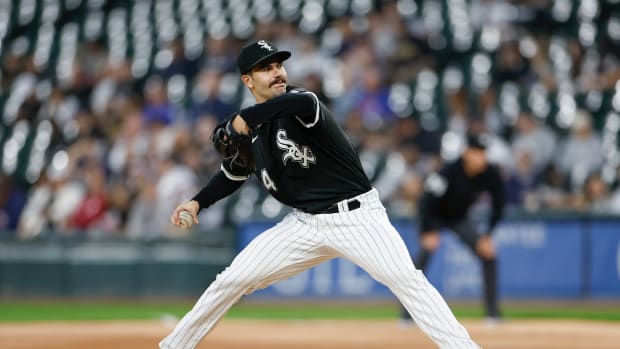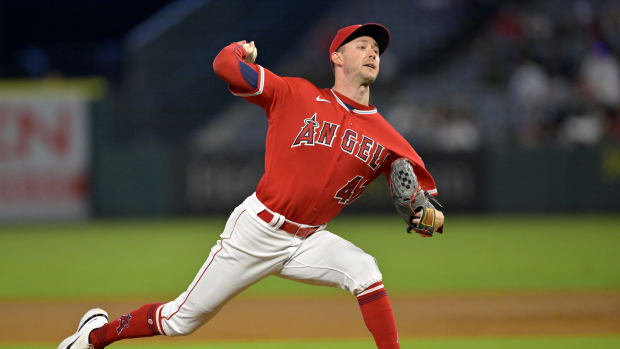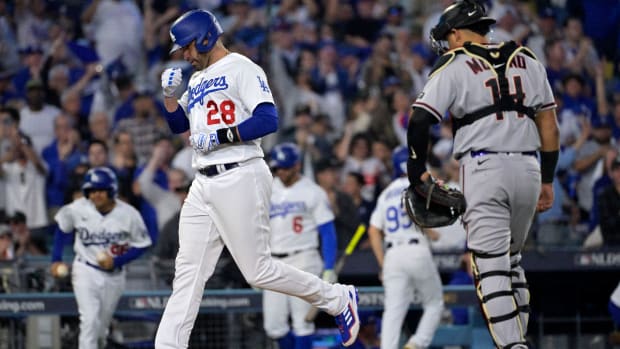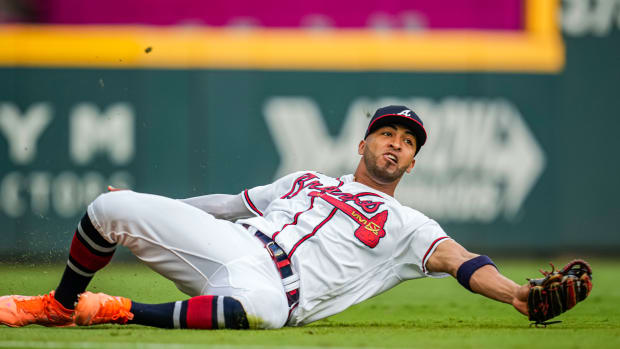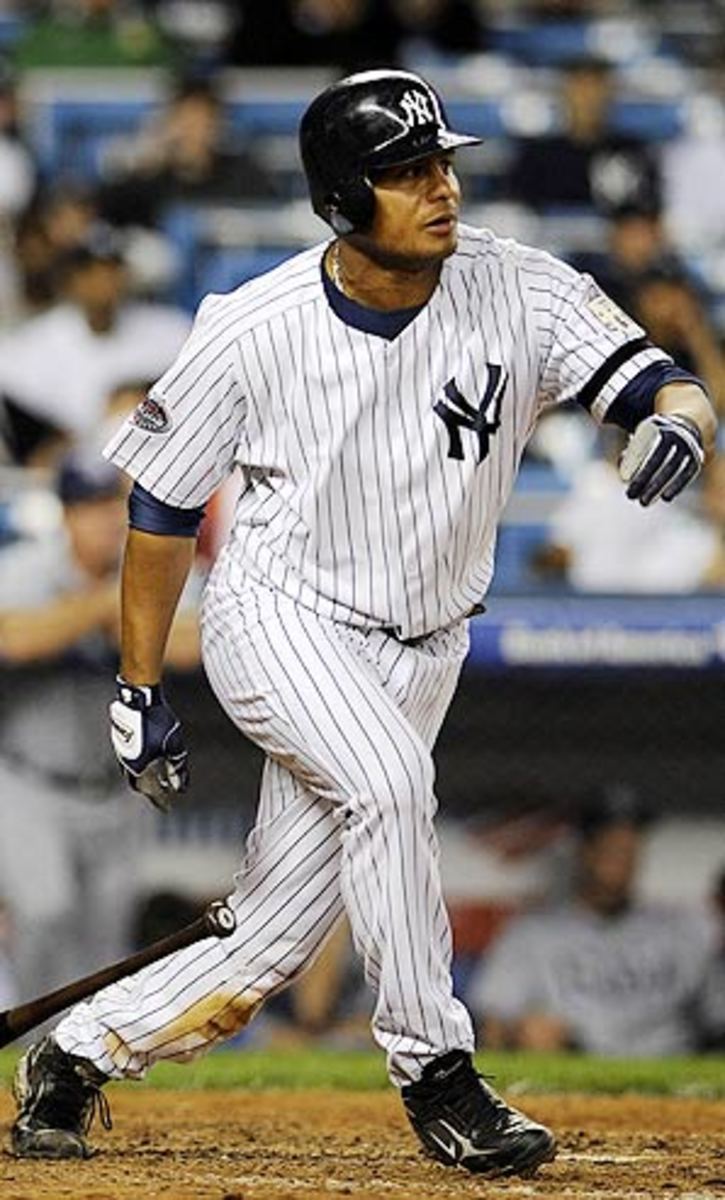
Unconventional Wisdom: Best bargains in free-agent class
Extensive lists that rank most or all of the players on the free-agent market are all the rage, as is predicting where each player will go and for how much and how long. I love reading these pieces myself, but I have a hard time writing them. After the top 10-15 names or so, the rankings become very context-sensitive. What did the comps above him go for? Who's left below him? What teams have holes to fill? Where's the depth in the free-talent markets?
Similarly, I don't think you can make good predictions for the end homes and contracts of more than a few of these guys, other than to say that most of them are going to make more than you thought they would.
What I do like to do is go bargain-hunting, noting that it's a relative term here. As has been noted in my inbox and on message boards, I rarely like any free-agent signing at the top of the market, because you're almost always walking into the winner's curse. However, as you work your way down the list, you can find players who may be undervalued for one reason or another, players who have some chance to return more than what they'll sign for, or at least have a greater impact on their new team than is anticipated. Some are at or near the top of the rankings, others are buried deep, but I'll take this pool of players, collectively, over the free-agent field.
His languorous approach and his decline from a star peak have fed the perception that Abreu is less valuable than he actually is. What I see is a player who has established a new level of performance below his personal peak, but still well above that of an MLB right fielder. He's retained much of his speed (nine triples, 47 steals the last two years) and his plate discipline, while losing range in right field and some power. I look at his last two years, basically .290/.370/.460, and wonder what that might look like in any other competitive context other than the AL East. You may remember that Manny Ramirez appreciated his move to the NL. Likely signable for a three-year commitment in the low eight figures per year, Abreu is the free-agent outfielder most likely to return good performances in each year of his new deal. If he should change leagues, he'll look like a star again.
One of the great lessons of the sabermetric era is that strikeout rate predicts longevity for pitchers, so you might look at Lowe, whose rate is right around the average for major league pitchers despite his context, and question his inclusion here. When signing a free agent though, risk avoidance has its place as well, and Lowe's durability and pitch efficiency make him a fairly safe bet for the four-year deal he'll command. Lowe has posted the best two Stuff scores -- which factor in walk, strikeout, home-run rates and context -- of his career the last two seasons, and he never misses starts. He'll be 36 next June, but there are a lot of similarities between Lowe now and Greg Maddux when Maddux was at the same age, both statistically and stylistically. Maddux averaged 214 innings from age 36 through 39, and I'd bet that Lowe could do much the same.
Wood's injury history is by and large a product of his usage as an amateur and as a young professional; you're signing a 32-year-old with a career 3.16 RA, 5/1 K/BB and 125 strikeouts in 102 2/3 innings as a reliever, someone whose relatively high ERA last year belied his dominance. I think he's a better bet both from a performance and a health standpoint than Francisco Rodriguez is.
A couple of readers asked whether Wood's HBP rate -- he hit seven batters last year, and dings one every 14 innings or so over his career -- should be counted against him in his evaluation. It's a fair point, although HBP rates are jumpy enough that you don't want to overstate the case; Wood, after all, hit three batters in 110 innings from 2004 through '07, seemingly getting the problem under control. I would say, though, that if you called all his HBPs "walks," you'd have a pitcher with an 84/21 K/BB ratio in 66 2/3 innings last year, which is still someone I want to sign, and quickly.
Johnson's Stuff scores in his two-year return to the Diamondbacks: 48 and 27. He struck out 245 men and walked 48 (and nine intentionally) in 240 1/3 innings. His home-run rate was high (31 allowed, about one every eight innings), but not disastrously so. Although it seemed like he was on the DL a lot, Johnson actually made 30 starts in 2008 and averaged six innings per outing with a better than 4-to-1 K/BB. Because he's 45, you can get away with a one- or two-year deal for a reasonable average annual value. The risk isn't that he'll be ineffective -- his one bad season in this decade came as a result of an absurd BABIP year with the Yankees in 2006 -- but that he'll be unavailable, though on a two-year deal that's a risk worth taking. Johnson has more short-term upside than any pitcher on the market other than CC Sabathia.
But for three disastrous starts in August of 2007, Mussina would be perceived much differently. The three outings, in which he allowed 25 hits and 20 runs in 9 2/3 innings, destroyed his 2007 pitching line and gave rise to the idea that he was done. Prior to those starts he was having a reasonable season for a 38-year-old: a 4.50 ERA, 3/1 K/BB, 5 2/3 IP/start. After them he made five appearances with a 3.49 ERA, and of course, followed that with his strong 2008 season. Those starts happened, and you can't just ignore them, but it's clear that the hysteria that accompanied them was disproportionate, and that they signaled not the end of Mussina's career, but a trough in an extended stretch of effective pitching. Hitting the market at 40, he's a six-inning starter who doesn't walk batters and would he helped by a big park and a good defense. Forget 300 wins; in the right situation, Mussina could have Jamie Moyer's forties and win 320. A move to the NL would help.
The Diamondbacks have a strong front office, but I'm not sure that even they're aware of what they might lose this winter: 230 innings of mid-3.00 ERA, K-per-inning baseball. Cruz has been used in every role but closer in his career, and the lack of wins or saves that he hits the market with (29 and one; four and zero last year) will likely keep his price down. However, his RA has dropped for three straight years and his strikeout rate has jumped in the last two, making him a prime candidate for a savvy team. One bit of warning: Like Rodriguez, Cruz's walk rate has been going in the wrong direction, up to 31 in 51 2/3 innings in 2008, and he's particularly prone to putting left-handed batters on. That may make him a better fit for a team not needing a four-to-six-out reliever -- i.e., not the Mets.
Given the pathetic state of the designated hitter in the AL, there are very few teams that couldn't use Giambi's still-potent bat in the lineup. Stop asking him to play defense, don't worry that he runs like a pregnant Matt Stairs and just take the .370 OBP and .520 SLG against right-handers. Given the type of hitter that he is, I'm not convinced he doesn't have better than that in him, maybe an Edgar Martinez-kind of late kick. He could be a huge bargain given how many teams will shy away from his obvious flaws; quite frankly, I'm not sure the Yankees shouldn't have picked up his one-year, $22 million option. You could eat some of that and have a pretty good trade chip.
He has never been ineffective. Since his 12-start, 5.48-ERA debut in 1988, Smoltz's single-season-high ERA is 4.14. He's missed one full season and significant parts of others, but he has never, even last year, been a pitcher who hurts you on the mound. Like Johnson he gives you the best choice: he's going to be good, or he's not going to be pitching. I would sign Smoltz to whatever kind of creative contract it took to get me an option on his services in 2010.
Some of the reason the Cardinals surprised in 2008 was Izturis' defense, who rated a +21 in the Plus/Minus System in something less than full-time play. He was a great defender with the Dodgers and is one of the few players whose glove could carry a bat like his. Izturis hits the market at a time when shortstops are in short supply, and an appreciation of what improved defense can mean to a pitching staff perhaps at a peak.
His brief appearance in Beertown was an underrated key to the Brewers' summer surge, and ignored completely when they picked up a different lefty bat not long after he arrived. A strained oblique effectively ended his season in July, but his skills -- hitting the long ball, almost playing third base -- should be attractive to the smarter front offices in MLB, the ones who don't get too hung up on strikeout rates. Like Izturis and Giambi, Branyan is a context-dependent free agent, useful to just a subset of teams, but exactly the right guy for that subset. Put Izturis on the Orioles or Indians, Giambi on the Mariners or Royals, Branyan on the Reds or Astros, and you have a high-value, relatively low-cost signing that addresses a real need.
This is a hunch play, based largely on the fact that the mistake with Pavano was his contract, and that the abject failure of his marriage to the Yankees may make him a bargain now. If healthy he's probably a league-average starter with a little more upside than that, and he's essentially available for incentives. Throw Bartolo Colon into this category as well, coming off of a disappointing stop-and-start year for the Red Sox. One of these pitchers will probably have an effective '09; I'm just not terribly sure which one.































